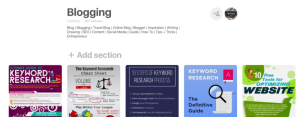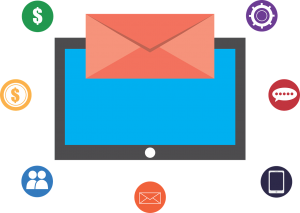
Whether you’re just getting started or working on building your optimization muscle company-wide, sourcing ideas for A/B tests from around the organization ensures that you incorporate a wide range of perspectives into your experience optimization strategy. Strategic test ideas can come from marketers, customer support agents, sales reps, executives, or even teams that aren’t directly customer-facing.
Inviting ideas from across the company builds internal credibility and authority for optimization, increases the efficiency of the optimization team, and captures ideas that impact the full customers experience. It also helps set a fun, energizing, and inclusive tone for testing. Here’s how to make the experience of submitting test ideas fun and engaging to employees around your organization and unleash the potential of your optimization program.
If you don’t take the time to source test ideas from all corners of your organization, you’re running the risk of never uncovering your next big win, or never solving points of friction that are stopping visitors from converting on your site or mobile app.
Here’s how to create an idea submission competition from start to finish, including downloadable templates!
1. Create an internal survey or form

A sample test idea submission form.
Start by creating a simple, lightweight form to capture ideas. Google Forms is the most popular choice for submission forms because they’re easy to build and share. However, there are plenty of other options: if you’re looking for alternatives, check out this review of the most popular form builders. Some teams build submission forms on top of project management solutions, like JIRA and Trello.
The form should be short and straightforward, with the goal of capturing an insight or idea quickly. Include basic information like the submitter’s name, test idea, a quick description, and a primary goal the test will impact.
For more detailed steps on how to create an idea submission form, take a look at this article from the Optimizely strategy team.
2. Determine rules and rewards
Structuring idea submission as a competition will help you to increase the quality and quantity of ideas you receive. To make it motivating and straightforward for participants, take the time to establish rules and incentives up front.
Address questions like:
- How long does submitting an idea take?
- Are any qualifications required to participate (customer-facing vs. internal teams, etc.)?
- What is the deadline for submitting an idea?
- Can a participant submit multiple ideas?
- Are there prizes for winning, or just for participating?
- What makes a winning idea (an idea that gets tested, or an idea that generates an improvement)?
- What are the incentives or prizes for winning ideas?
Document these FAQs and include them in any communication you might send out broadly to your company, over email, in a document, on a wiki, or another location where internal documentation can be found.
3. Provide themes to guide ideas
 Share the context of what you’re already thinking about testing to ensure that the ideas you receive are ones you’d actually consider testing. What are the overarching themes of your optimization strategy this year? What are some of the high-value funnels, flows, or pages where you’re looking to increase conversions?
Share the context of what you’re already thinking about testing to ensure that the ideas you receive are ones you’d actually consider testing. What are the overarching themes of your optimization strategy this year? What are some of the high-value funnels, flows, or pages where you’re looking to increase conversions?
One way to describe this framework is conversion “themes”. At Hotwire, Pauline Marol uses conversion themes to organize her test ideas and to help with prioritization. Ideas that fall within a conversion theme are given higher priority in her idea queue of potential tests.
Conversion themes might include ideas that incorporate:
- Strategic company initiatives
- Valuable customer segments
- Design principles
- Mobile experiences
- Psychological influences on actions
- Already tested and conversion insights
4. Host a kickoff
Generate excitement and take the opportunity to answer questions in person by hosting a kickoff event for your idea submission competition. If your organization is new to testing, take the opportunity to educate them about A/B and multivariate testing, the objectives of your team, and highlight any initial success you may have had.
If you have the opportunity to speak at a company kick-off event or at an already-scheduled all-hands meeting, even better—take a moment to plug your testing initiatives and provide a call to action that asks your audience to get involved.
You could also couple your competition with a Lunch and Learn deep dive “What is Testing?” presentation to share more of your process, objectives, and results.
5. Publicize the event

Simple enough—if you’re going to put effort into organizing a competition and spreading the work, visual reminders help ensure that you maximize participation and keep the initiative on everyone’s mind.
Create a flyer that captures the key dates and call to action and/or your idea submission form. Print and post it in your office (and remote ones too!), or circulate it as an email attachment. Feel free to get creative with your flyer placement.
We designed a flyer template you can use for your content so you don’t even have to bug your designer. Download it here.
6. Plan the next steps before you begin
How will you determine a winner in your competition? What will you do to manage the influx of ideas you’re sure to receive? How might you start to prioritize which ideas get tested first? How will you communicate the outcomes of the experiments to anyone who participated in the competition?
Ideas are just the beginning of a long and fruitful process of optimization—take the time, before you begin, to document next steps and assign roles and responsibilities if you have a team helping you along the way.
For ready-to-use templates that will make you more successful and efficient at generating test ideas, prioritizing and tracking experiments, sharing results, and much more, make sure to get your free copy of Optimizely’s 2016 Testing Toolkit.
Business & Finance Articles on Business 2 Community(53)
Report Post




